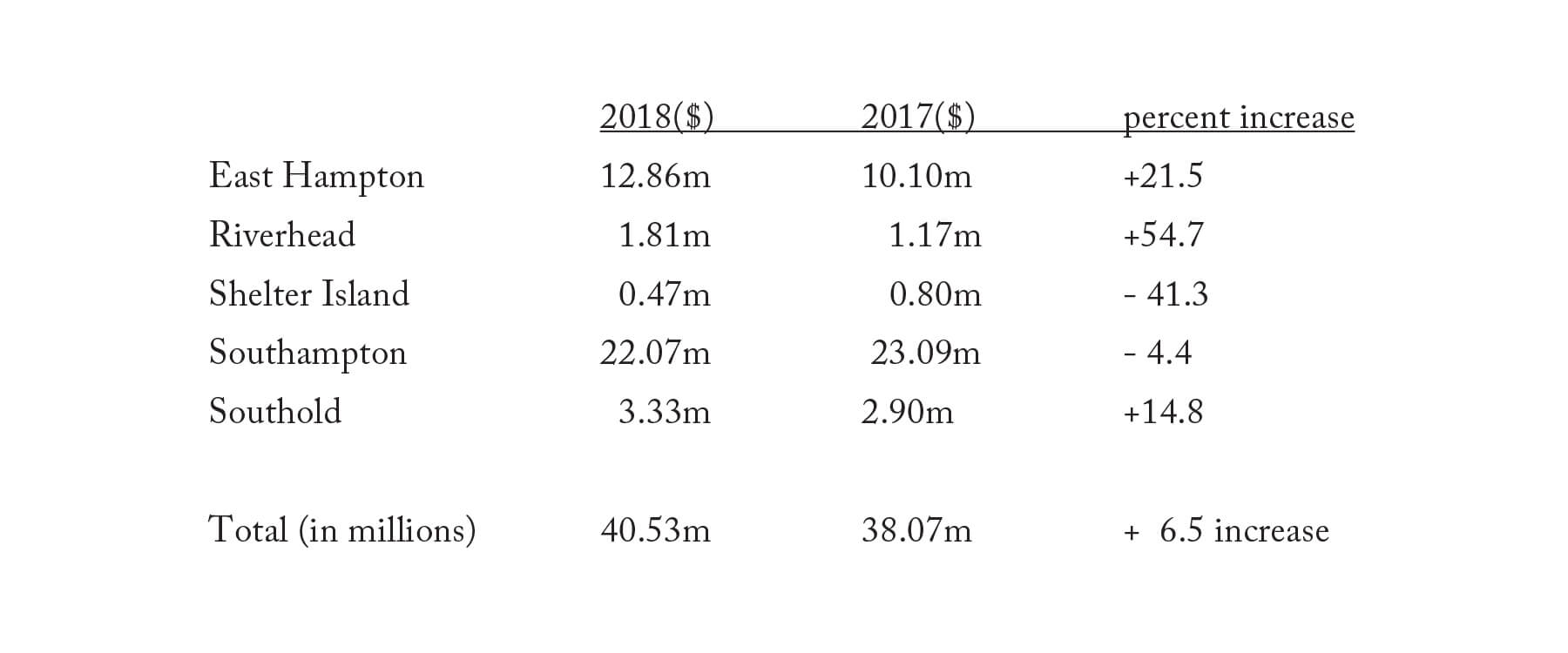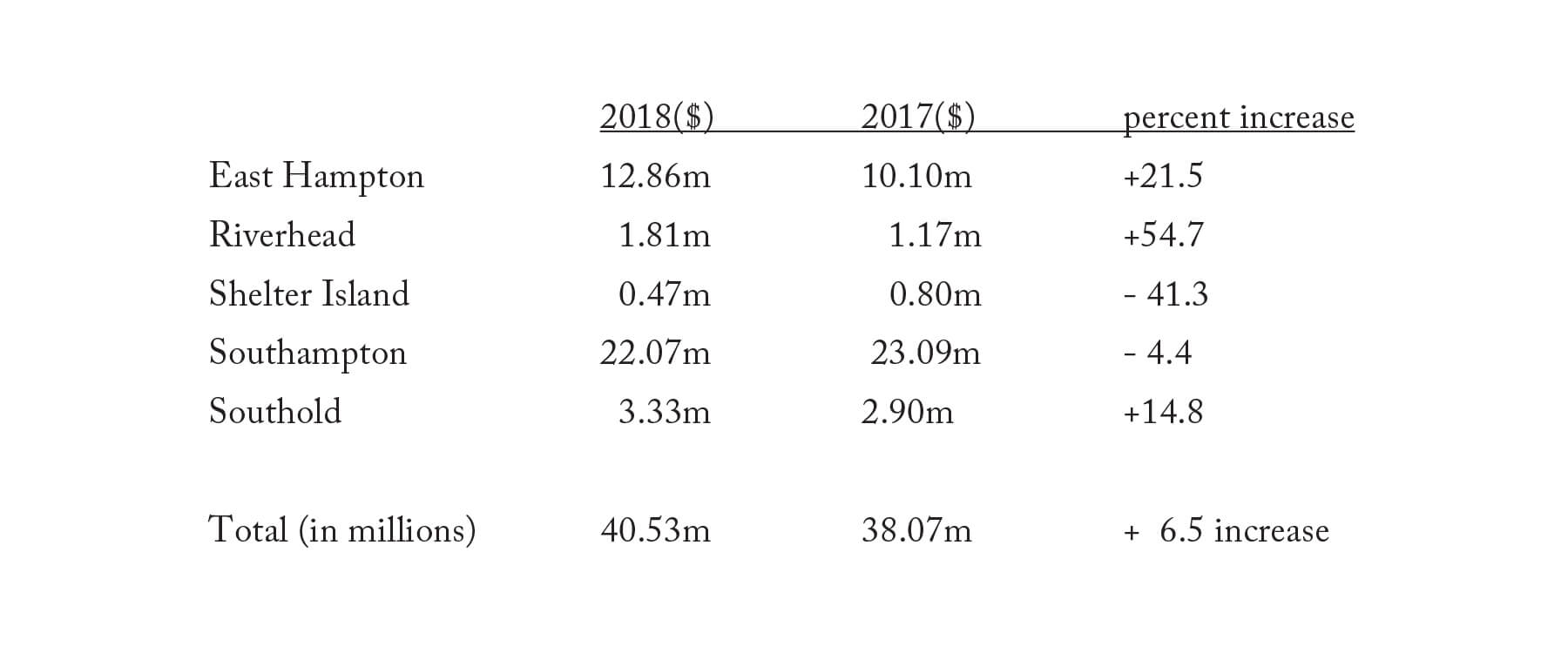More CPF Monies Flow Into Town Coffers


Talk about the gift that keeps giving.
If anyone would have imagined real estate agents, developers, environmentalists, and politicians from every party would agree on something as radical as a two-percent surcharge on real estate transactions 25 years ago, a battery of mental exams would have been ordered.
But agree they did, and the result has been the most spectacular and successful land preservation effort in the country.
Since its inception in 1999, the Community Preservation Fund has generated $1.283 billion for the five East End towns. The money collected has been used by towns to preserve farmland and open space and to create parks. In 2016, voters approved expanding the scope of the CPF to address water quality issues. Up to 20 percent of revenue may now be used for water quality initiatives.
The fund generated $40.53 million for the first five months of 2018, including $8.94 million in May. That’s a 6.5 percent increase over 2017, which indicates a healthy real estate market.
It is possible, with an active market, 2018 could go down as one of the best ever as far as CPF revenue goes; 2017 was not a record-breaking year.
Revenue in 2017 was 2.3 percent higher than 2016, but only the fourth highest total in the history of the program, according to New York State Assemblyman Fred Thiele’s office. The five East End towns collectively brought in $95.9 million over the course of the year for the CPF.
The record for the most CPF revenue collected in a year was set in 2014, when the total was $107.8 million.
The Town of Southampton raked in $56.4 million in 2017, a three percent year-over-year increase. The Town of East Hampton collected $26.7 million, which was a 0.8 percent decrease. Riverhead saw an 8.3 percent gain and Southold revenues ticked up 7.3 percent. Shelter Island stayed flat.



